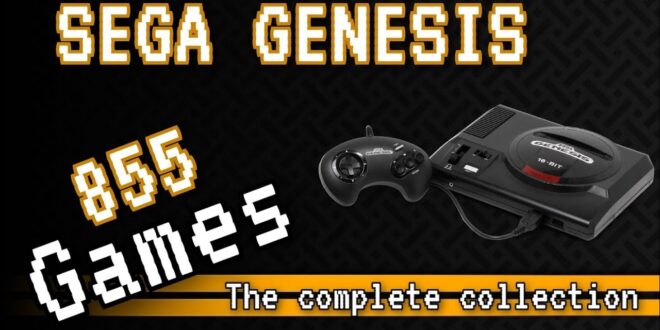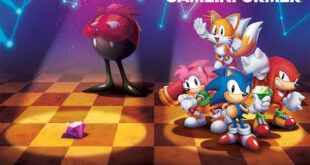The Sega Genesis: A Historical Overview and System Review
Enjoy our comprehensive retrospective as we showcase each and every one of the classic games developed for the Sega Genesis in this captivating video journey, or read up on the system and review below!
The Sega Genesis: An In-depth Look at the Console That Defined an Era
The Sega Genesis, known as the Mega Drive outside North America, is a 16-bit home video game console developed and sold by Sega. First released in Japan in 1988, then North America in 1989, and finally in PAL regions in 1990, the Sega Genesis became a defining piece of video game history. It was Sega’s third console and the successor to the Master System.
Specifications
Let’s start with the technical specifications of the Sega Genesis:
Main Processor: Motorola 68000 CPU running at 7.6 MHz
Secondary Processor: Zilog Z80 CPU at 3.58 MHz (also used for audio control and as the main CPU for Master System games)
RAM: 64 KB of main RAM, 64 KB of video RAM
Audio: Yamaha YM2612 FM synthesizer chip, TI SN76489 PSG (Programmable Sound Generator)
Graphics: Yamaha VDP (Video Display Processor) capable of displaying up to 61 colors on screen from a palette of 512
Storage: Cartridge-based, typically ranging from 512 KB to 4 MB
Output: RF, composite video (some models also featured RGB via SCART)
Controller: 3 or 6 button layouts, with a directional pad
History
The Genesis was Sega’s ambitious leap into the next generation of gaming, and it marked the beginning of a fierce competition with Nintendo, a period often referred to as the “console wars.” This rivalry would spawn aggressive marketing campaigns and a race to secure exclusive games and partnerships.
Sega’s strategy was to offer more “mature” content compared to Nintendo, aiming at an older demographic with titles like “Sonic the Hedgehog,” which became the console’s flagship series, and “Mortal Kombat,” with its notorious uncensored portrayal of violence.
System Review
Design and Hardware
The Genesis featured a sleek, black design, which was a stark contrast to the gray of the Nintendo Entertainment System (NES). It had an easy-to-use cartridge slot and simple, intuitive controllers. The introduction of the six-button controller later in its life cycle was in response to complex fighting games like “Street Fighter II.”
Gaming Library
The Genesis boasted a substantial library of games, with over 900 titles released. The console is best known for its action-packed platformers, sports games, and RPGs. Franchises like “Sonic the Hedgehog,” “Streets of Rage,” “Shinobi,” “Phantasy Star,” and “Ecco the Dolphin” helped define the system’s identity.
Audiovisual Capabilities
The Genesis’s audio was powered by the Yamaha YM2612 FM chip, which is celebrated for its rich and distinctive sound, a staple of the era’s gaming music. The video processor allowed the Genesis to produce detailed sprites and backgrounds, although it was limited in color output compared to its rival, the Super Nintendo Entertainment System (SNES).
Expansion and Peripherals
Sega also expanded the capabilities of the Genesis with add-ons like the Sega CD and the Sega 32X, which allowed for an expanded game library with improved graphics and audio capabilities. However, these peripherals were expensive and contributed to market confusion, which is often cited as a reason for the Genesis’s eventual decline.
Impact and Legacy
The Genesis played a pivotal role in shaping the gaming industry. It pushed the boundaries of what was expected from home console entertainment and helped establish some of the best practices in marketing and branding that are still in use today.
Conclusion
In retrospect, the Sega Genesis is regarded as a classic console that offered a robust lineup of games and introduced innovations that would become standard in the gaming industry. While it ultimately couldn’t maintain its lead over the SNES in the console wars, its impact on gaming culture remains undeniable. The Genesis helped to build Sega’s reputation as a major player in the video game industry and continues to be celebrated by retro gaming enthusiasts around the world.
 Retro-Replay.com Retro gaming reviews, news, emulation, geek stuff and more!
Retro-Replay.com Retro gaming reviews, news, emulation, geek stuff and more!




